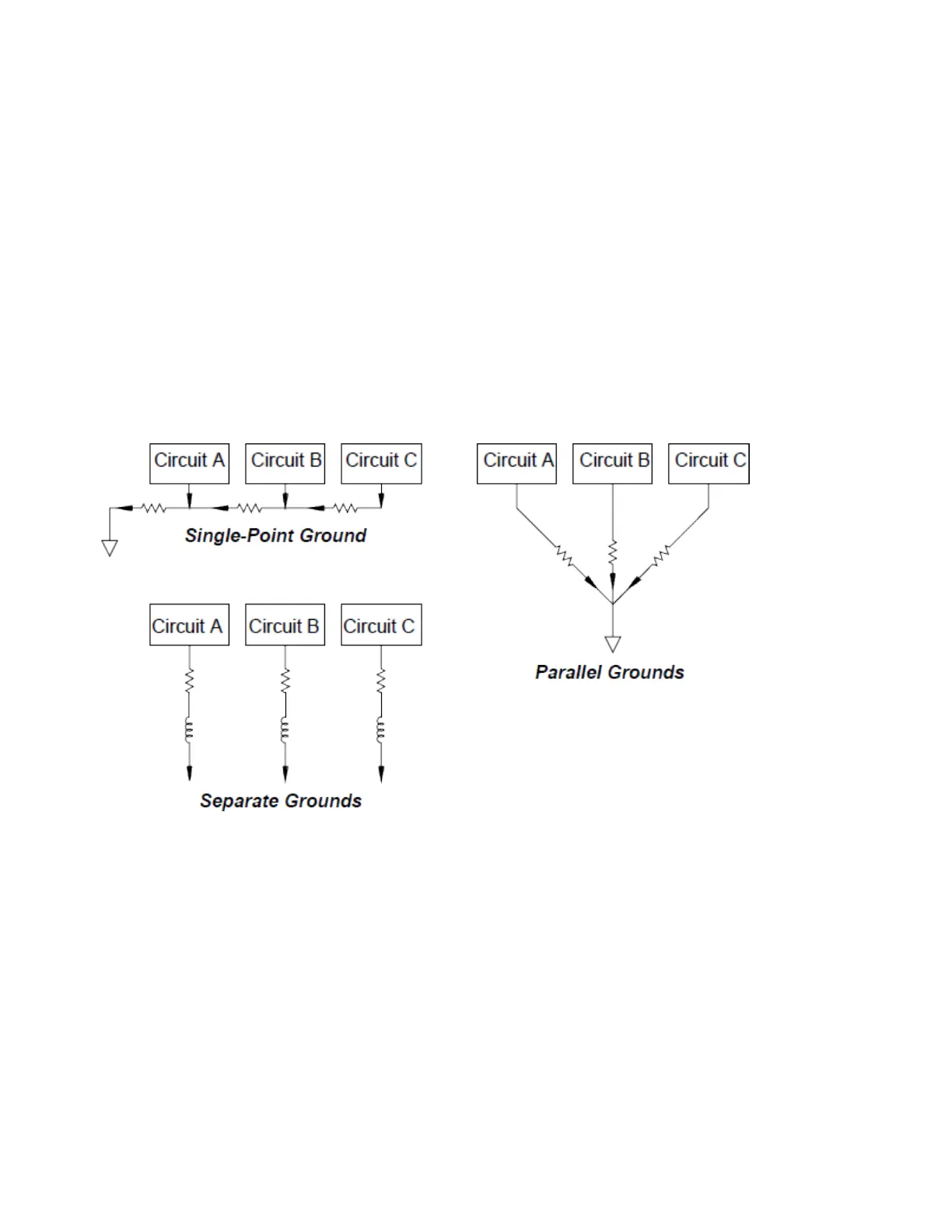Grounding techniques
The purpose of grounding is to avoid ground loops and minimize noise. Most systems should have at least
three separate ground returns.
1.
One ground for signals. You may also want to provide separate signal grounds between high-level signals,
low-level signals, and digital signals.
2.
A second ground is used for noisy hardware such as relays, motors, and high-power equipment.
3.
A ground is used for noisy hardware such as relays, motors, and high-power equipment.
In general, for frequencies below 1 MHz or for low-level signals, use single-point grounding (see image
below). Parallel grounding is superior but it is also more expensive and more difficult to wire. If single-
point grounding is adequate, the most critical points (those with the lowest levels and/or the most precise
measurement requirements) should be positioned near the primary ground point. For frequencies above
10 MHz, use the separate grounding system. For signals between 1 MHz and 10 MHz, you can use a
single-point system if the longest ground return path is kept to less than 1/20 of a wavelength. In all
cases, return-path resistance and inductance should be minimized.
4Measurement Tutorials
178 Keysight DAQ970A User's Guide

